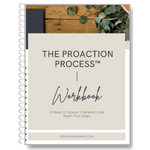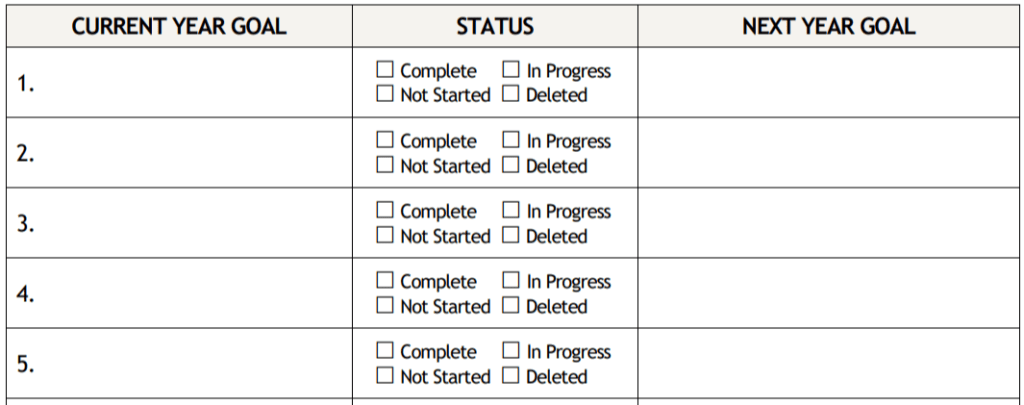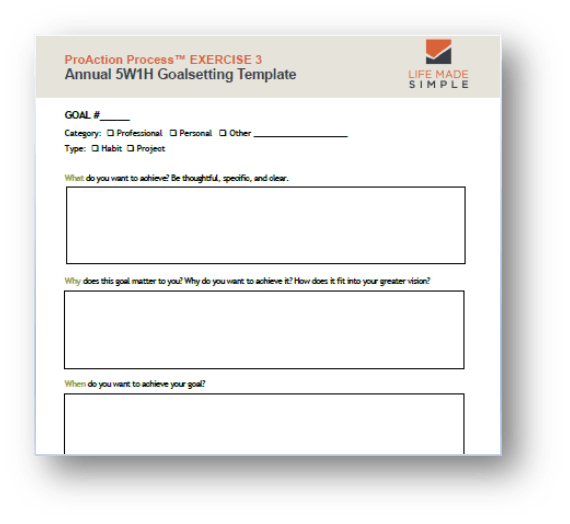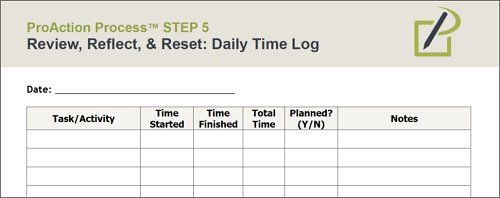
by Lori Vande Krol | Feb 6, 2023 | General Productivity, Goals and Priorities, Habits, Planning, Time Management
Julie reached out because she had reached a point of extreme frustration and overwhelm. She felt she was constantly trying to catch up, never finding time for her “important but nonurgent” tasks and projects, always worried about what she might be missing, and therefore not truly enjoying her work or personal time. Julie was always reacting to the latest emergency, others’ priorities become her priorities, and she would reach the end of the day, the week, and the year feeling drained, overwhelmed, and unaccomplished. Does this sound familiar?
After talking with Julie, we established that one change she needed was to incorporate a better system and tools for planning her time – her years, months, weeks, and days. An effective plan, and strategy to follow and maintain it, allows Julie to better understand her goals and priorities, and to make better decisions and choices throughout her days. Here I share ten proven strategies for incorporating effective planning into your own days and weeks.
1. Clarify your goals and priorities.
What is important to you in work and life? What do you hope to achieve in the long-term and short-term? If you aren’t clear on what your goals and priorities are, you can never know if you are working on the right thing at any point in time. This clarity will be the basis for your plan and the choices you make throughout the day.
2. Break down your goals into strategies and milestones.
As an elephant lover, I hate to use the saying “How do you eat an elephant? One bite at a time.” But it is a good metaphor for attacking your long-term and short-term goals. Once you know what you want to accomplish, you can break your goals into smaller pieces by defining the strategies you will use and when you will achieve various milestones.
3. Create your habits and routines.
Without good habits and routines, it is easy to let your days and weeks slip away without focusing on what is most important. Spend some time figuring out how you will incorporate the needed activities and time to reach your goals. List the habits you want to follow annually, monthly, weekly, and daily. Define daily routines such as tasks or actions you will take each morning, start of day, end of day, and evening.
4. Establish your boundaries.
It is likely that you will need to establish new boundaries in order to be successful in reaching your goals and sticking with your plan. Some examples might include:
- I will return emails and phone calls within 24 hours.
- I will take 1 day to review any new priorities, tasks, or projects before providing an answer.
- I will say “no” to anything that does not support my annual goals.
- I will not take on new volunteer positions this year.
- I will not respond to email or text after 6pm or on weekends.
- I will be in bed by 11pm and up by 7am each day.
Choose boundaries that work for your needs and personality and that will help you to reach your goals.
5. Get the right people on board.
Who will be impacted by your goals, strategies, habits, and routines? Do you have someone to help hold you accountable? Who can help support your plan? Be sure these people are aware of your plan, your boundaries, and how they can help you be successful.
6. Clear your space and your mind.
Take time regularly to clear your physical, digital, and mental space. If necessary, set aside a day or more to create an environment where you can focus and be intentional.
7. Determine the right tools.
What tools can you use to support your planning, focus, and daily intention and action? My favorite tools for daily and weekly planning are Microsoft Outlook/Tasks and the ProAction Planner. Do your research and find tools that will allow you to plan, reflect, track, and maintain. When working with others, it is also important to implement tools that will help you plan, collaborate, and track projects and tasks with them. Examples include Microsoft Planner and Teams, Asana, Trello, and Google Workspace. These are just a few of the many options available. Be sure to determine your needs and find what will best fit those needs.
8. Plan your weeks and days.
Set aside time regularly to plan your weeks and days based on your annual goals, habits, routines, and other priorities. Block time for the important, but nonurgent, projects and tasks. While it is rare that your week will go exactly as planned, having this basis as you begin your week will provide control and perspective, and allow you to make better-informed decisions when new urgencies arise.
9. Track.
Incorporate a system to track progress on your projects, goals, and habits. Review this regularly in order to evaluate and reset as needed throughout the year. You might also consider a look at how you spend your time and how closely you stick to your plan. Each day, evaluate challenges and areas for improvement. Small changes can yield big results.
10. Reflect and improve.
In addition to tracking your progress, schedule regular time to reflect on your results in order to make appropriate adjustments and allow for continuous improvement. This might include a quick daily and/or weekly reflection, a more thoughtful monthly reflection, and a deeper annual review and reflection. What went well? What challenges did you face? What will you stop, start, or continue doing? This is also a great time to practice gratitude. Be kind to yourself and others.
After clarifying her goals and priorities and putting the systems above in place to fit her needs, work, and lifestyle, Julie is feeling much more in control of her time. She is living intentionally and working proactively which has reduced stress and overwhelm. But the biggest and best change is that Julie is enjoying her work again and is able to focus on those people and things that matter most in life.

Need some tools to assist with the areas above? Check out our new ProAction Process™ Workbook packed full of tips, templates, worksheets, and exercises to support these areas of planning and more.
If you’d like a partner in helping you address your overwhelm and reach your goals, I’d love to talk. Reach out or schedule your free 30-minute consultation.

by Lori Vande Krol | Dec 19, 2022 | General Productivity, Goals and Priorities, Habits, Planning, Time Management
How has 2022 been for you? What went well? What could be improved? Did you reach your business and life goals? What will you do differently next year to grow further?
Before you do 2023 annual planning, it is a valuable exercise to close out the year and prepare for the new one by reviewing your goals, habits, and routines. Follow the steps below to review and reset for continued success.
1. Reflect
Look back on the past year and answer reflection questions such as:
- What did I accomplish this year?
- What am I proud of?
- What am I thankful for?
- What should I celebrate?
- What will I continue to do that contributed to my success?
- What were my challenges this year?
- What could/would I have done differently?
- What is one thing I could do to improve next year?
Set aside focused time to write your answers to these questions. You may be surprised at what you learn about yourself, your systems and habits, and how to address challenges in the upcoming year.
For example, during my Year in Review, I realized I am not diligent about scheduling time into my calendar at the beginning of each week for the “important but not urgent” tasks and projects. I, therefore, have not made the progress I wanted on many of these projects. I need to create a routine of setting aside time each week, just as I do with my exercise, before I build in other tasks and appointments. This will now be part of my planning process for 2023.
2. Review Your Annual Goals
The second step in your Year in Review is to review the status of your current year annual goals – both professional and personal. What goals are complete? What contributed to that success? Do you have goals that are not complete, or were not even started? If so, what challenges prevented their completion? Or perhaps there was a change in priority or focus during the year. Determine which of these goals should remain for the upcoming year and write any notes to carry into your 2023 annual goal setting.

3. Analyze Your Habits and Routines
How did you do on your goals and progress related to your defined habits this year? Review your habit tracking tables and schedule time to reward yourself for any goals reached. Will these habits continue or grow?
For those habits that were a struggle, analyze the reasons and what needs to change in the upcoming year. Do you understand the deeper “why” for the habit? Do you have the right tools in place? Do you need an accountability partner or coach? Determine the habits you will stop, continue, or update for the upcoming year.
Similarly, review your current routines (or routines you had hoped to establish this year). Look at your morning, start of day, end of day, and evening routines. How are they working for you? Do they need to be adjusted or reset? Establish the routines you would like to implement in 2023.
To help you with your Year In Review, I have created a downloadable template to walk you through the process. Click below to have it emailed to you.
Year in Review Template
FREE DOWNLOAD
You can also find this template, along with other valuable planning exercises and templates, at ProActionPlanner.com. Get them soon as they will only be free until the of the year.
If you’d like assistance with review and reflection, the goal-setting process, or in setting up systems for success, contact Lori at Life Made Simple or schedule your free 30-minute consultation. I’d love to help!

by Lori Vande Krol | Jun 22, 2022 | General Productivity, Goals and Priorities, Motivation, Procrastination, Team Productivity, Time Management
I have a confession to make. Months went by this year before I finally took focused time to set my annual goals. While I help others to do this daily and understand the importance and benefit of annual goal setting, I was not able to complete the task for myself. I took some time to reflect on my reasons for procrastinating on this task, which helped me to work through and complete the process. Following are a few reasons you might find goal setting difficult as well as some tips and resources to make it simpler.
1. The goal, outcome, or supporting actions, are unclear.
Too many times, I have gotten hung up on taking action because the end result, or the full range of steps I need to take to get there, is not completely clear. I have to remind myself that taking some action is better than nothing at all. Often, as you start to take action the goal and end result becomes clearer.
In his article, The Goal is Not the Point, James Clear says: ” In other words, your goal becomes your compass, not your buried treasure. The goal is your direction, not your destination. The goal is a mission that you are on, a path that you follow. Whatever comes from that path—whatever treasure you happen to find along this journey—well, that’s just fine. It is the commitment to walking the path that matters.”
When the goal or destination is not clear, consider your goal a direction you are heading, and clarify the end result as you go.
2. Setting big goals is scary.
There are many fears that can hold us back from setting and achieving goals. “What if I fail?” or “What if I succeed? Can I handle it? What comes next?” Perhaps it is a fear of change or a fear of losing control that is holding you back. In times like this, you must ask yourself, “What happens if I don’t try?”
Are you willing to live with more of the same? The status quo? Or are you willing to accept some risks and potential challenges in order to grow and achieve more? What great things might happen, for yourself and others, if you succeed? Take time to evaluate your fears. Learn what is driving the fear and anxiety in order to push forward. You may find that you even enjoy the journey.
3. Goal setting has not been successful in the past.
Last fall I was presenting a course on procrastination. When discussing potential reasons for procrastination, I shared that we often fail to take action when the end goal is unclear. An attendee raised her hand and asked, “What is the point of setting goals? It never works.” I challenged her to think more deeply about her hesitation toward goalsetting. I asked if there was possibly something else holding her back. After the presentation, we talked further, and I learned that she had worked for large corporations most of her career. Those companies would go through the annual goalsetting process, but it would end there. Management would not follow through or follow up on the actions required to achieve those goals. Goals were not reviewed regularly. Employees were also unclear on how the company’s goals tied to their own vision and goals. The lack of a full system for goal setting and implementation caused it to fail, and employees no longer trusted the process.
If goal setting has not been successful for you in the past, reflect on the true reasons for this. What can be done differently to improve your chances of success? There are many tools and tips to support individual, team, and company goalsetting. The systems and processes used need to work for everyone involved. Below I share additional resources for successful goalsetting.
The potential reasons for avoiding the task of goal setting are not unlike the reasons for procrastinating any task. The first step is working to understand your unique reasons for avoidance and then to find the right tool and process for you and/or your team. There is no doubt you will grow and achieve more.
Additional Resources for Goal Setting
Goal Setting: A Scientific Guide to Setting and Achieving Goals by James Clear
Mastering Time Management: What To Do Before the To-Do List by Lori Vande Krol
Do You Have a Lot of Big Goals? Focus on What You Know and Love by Lori Vande Krol
The Superman: Goal Achieved by Lori Vande Krol
The ProAction Planner™: a system to turn your annual goals into action throughout the year
FREE DOWNLOAD: Use the button below to receive a free Annual Goal Setting Template

Annual 5W1H Goalsetting Template
FREE DOWNLOAD
It is not too late to set your annual goals for this year! If you’d like assistance with the goal-setting process, or in setting up systems for success, contact Lori at Life Made Simple or schedule your free 30-minute consultation. I’d love to help!








Recent Comments